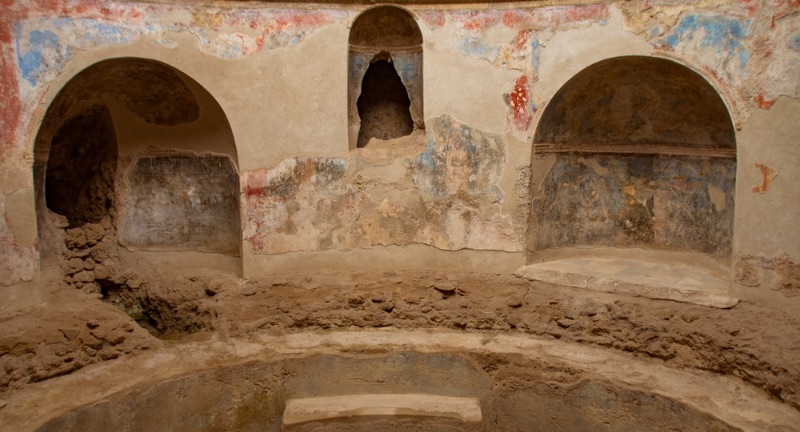
Shutterstock
Pompeii is a haunting reminder of the power of nature and how fragile human life is. Buried under volcanic ash from the eruption of Mount Vesuvius in 79 AD, this ancient Roman city was frozen in time, giving us a look into life during the height of the Roman Empire. Archeologists have uncovered many artifacts, art, and human remains that have helped us piece together the past. Today, Pompeii is not only a UNESCO World Heritage Site but a reminder of what once was.
Pompeii’s Origins

Shutterstock
Pompeii was founded in the 7th or 6th century BC by the Osci people. It later came under the influence of the Greeks, Etruscans, and eventually the Romans. The city’s strategic location made it an important commercial hub. Over time, Pompeii grew into a flourishing city before its sudden destruction.
Pompeii’s Location
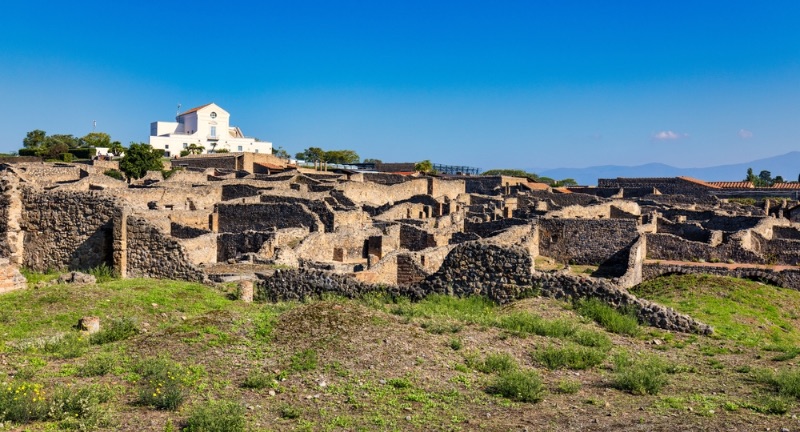
Shutterstock
Pompeii was situated near the modern-day city of Naples, Italy. It lay in the shadow of Mount Vesuvius, a now-famous volcano. This prime location helped the city thrive due to its proximity to the coast and trade routes. However, it also sealed its fate when the volcano erupted.
A Roman City
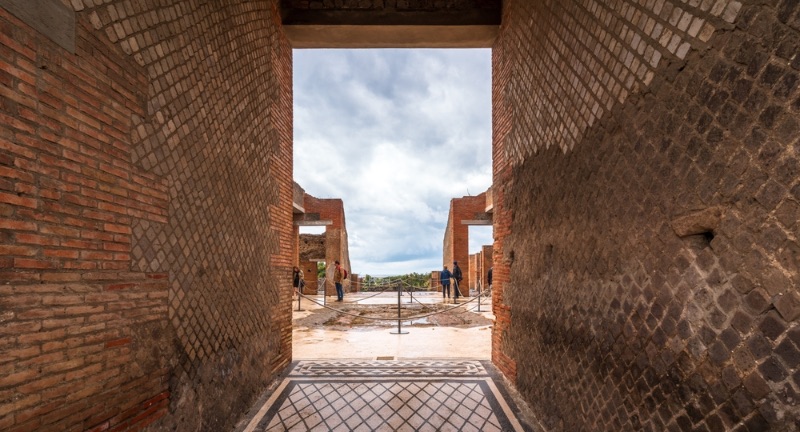
Shutterstock
Pompeii became a Roman city in the 4th century BC. As a Roman colony, it adopted Roman customs, architecture, and governance. It was home to Roman citizens and was known for its luxurious villas, public buildings, and bustling economy. The Roman influence is evident in its ruins today.
Mount Vesuvius Eruption
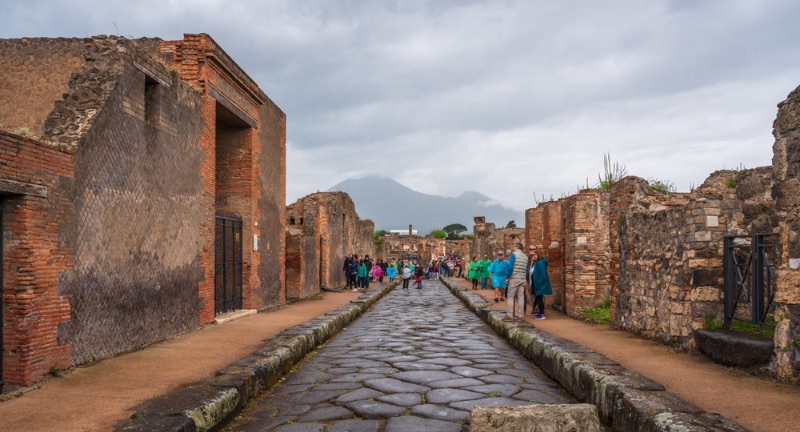
Shutterstock
Mount Vesuvius erupted in 79 AD, leading to the destruction of Pompeii. The eruption spewed ash, gas, and rock into the atmosphere, burying the city. This volcanic event is one of the most well-documented eruptions in ancient history. The city was lost under a thick layer of volcanic debris for centuries.
Buried Under Ash

Shutterstock
Pompeii was buried under several meters of volcanic ash after the eruption. This thick blanket of ash preserved buildings, artifacts, and even the bodies of the inhabitants. The city lay forgotten for almost 1,700 years before being rediscovered. This preservation offers an extraordinary glimpse into ancient life.
Rediscovery of Pompeii
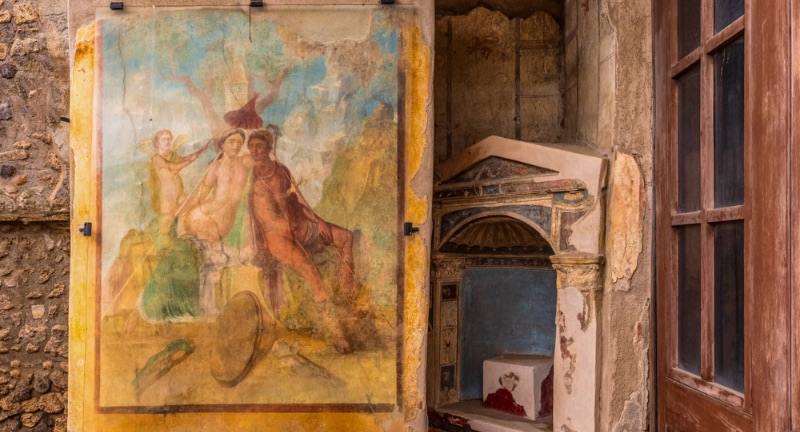
Shutterstock
Pompeii was rediscovered in 1748 during the reign of King Charles III of Spain. Excavations began, revealing the ancient city frozen in time. The discovery astonished the world and continues to yield archaeological treasures. Since then, Pompeii has become one of the most important archaeological sites in the world.
The Two-Day Eruption
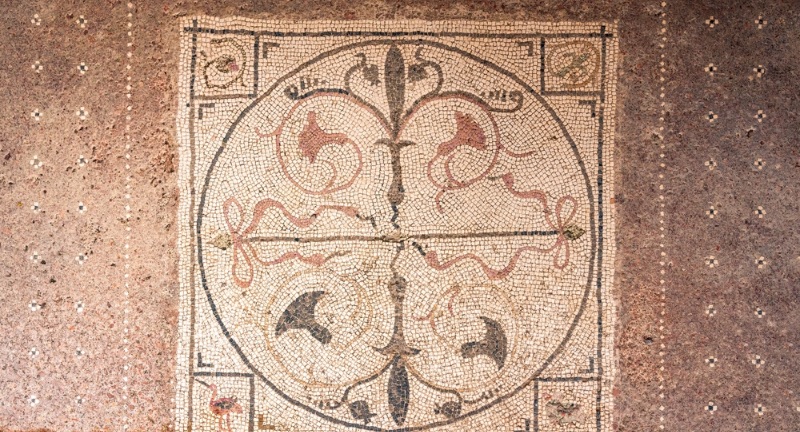
Shutterstock
The eruption of Mount Vesuvius lasted two full days. It began with a violent explosion that sent ash high into the atmosphere. Over the next two days, ash and pumice rained down, suffocating the city and its inhabitants. On the second day, pyroclastic flows sealed Pompeii’s fate, burying it completely.
Population of Pompeii
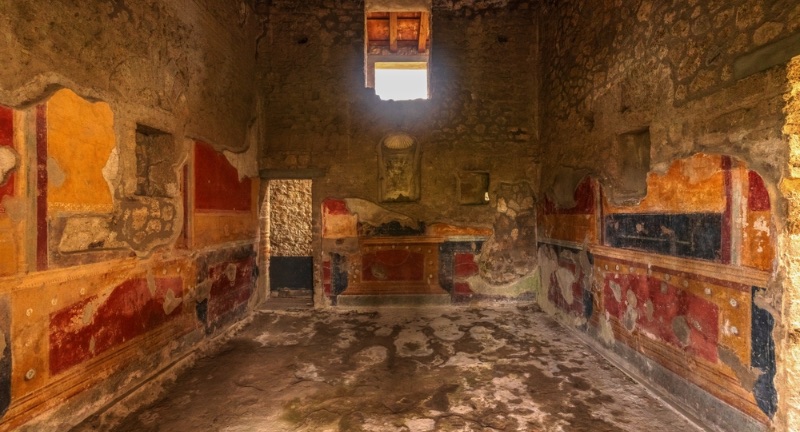
Shutterstock
At the time of the eruption, Pompeii had an estimated population of around 11,000 people. The population was a mix of Roman citizens, slaves, and foreigners. Many fled the city as the eruption began, but thousands were trapped. Those who remained perished under the deadly clouds of ash and gas.
Vesuvius’ Cloud of Destruction
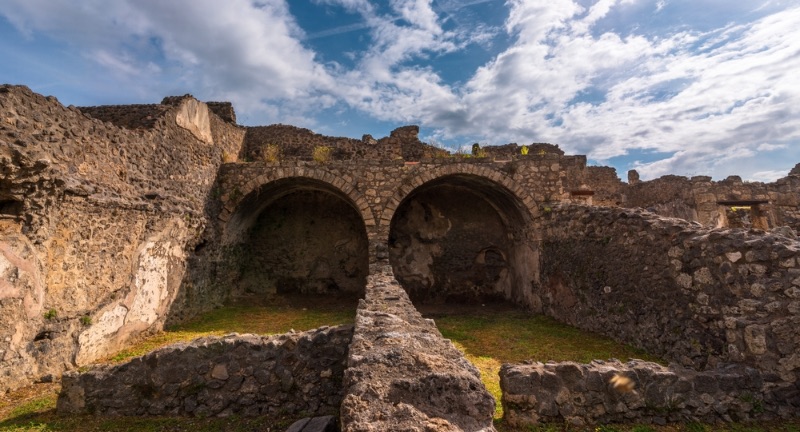
Shutterstock
When Mount Vesuvius erupted, it sent a massive cloud of gas, ash, and rock into the sky. The cloud rose more than 20 miles high and spread rapidly over the surrounding areas. This cloud blocked out the sun and caused panic among the population. The falling ash buried the city completely.
Pliny the Younger’s Account
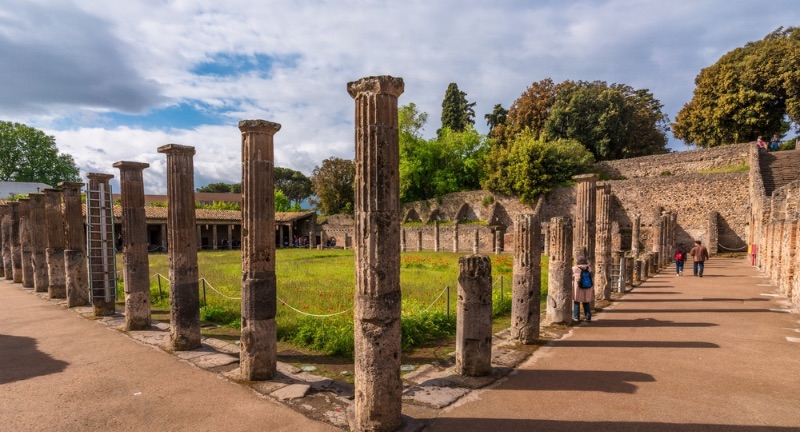
Shutterstock
Pliny the Younger, a Roman author and historian, witnessed the eruption from a distance. He wrote detailed letters describing the events of the eruption and the impact on the surrounding areas. These letters are some of the only surviving firsthand accounts of the disaster. Pliny’s writings provide valuable insights into the magnitude of the eruption.
Herculaneum’s Fate
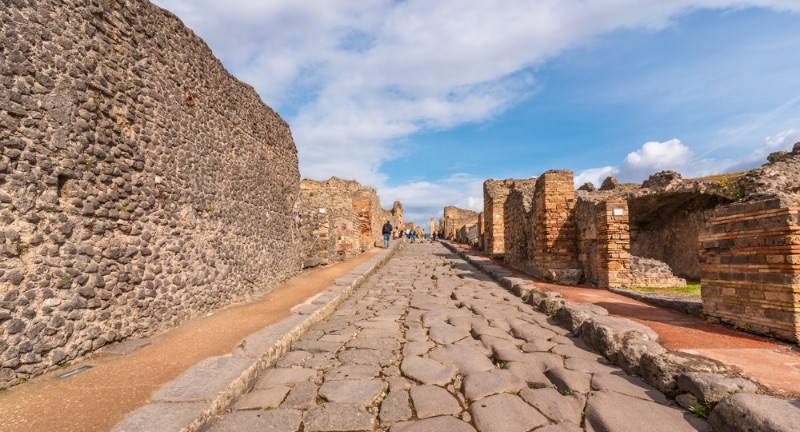
Shutterstock
Herculaneum, a nearby city, was also destroyed by the eruption of Mount Vesuvius. Unlike Pompeii, Herculaneum was buried by a different type of volcanic flow, known as pyroclastic surges. These surges preserved much of the city’s wooden structures, art, and artifacts. The city’s remains are incredibly well-preserved and offer further insight into Roman life.
Death by Thermal Shock
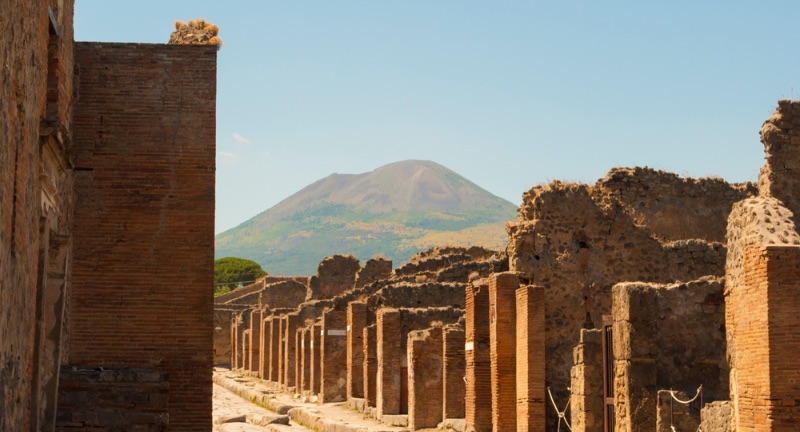
Shutterstock
Many of Pompeii’s inhabitants died not from suffocation but from thermal shock. When the pyroclastic flows hit the city, they released searing hot gases and ash. The extreme temperatures, exceeding 500°C, caused instant death. Bodies were frozen in the positions in which people died, preserving their final moments.
The Forum of Pompeii
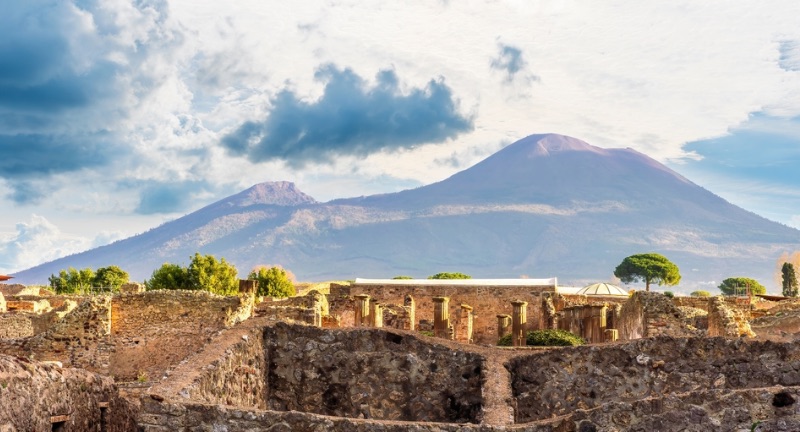
Shutterstock
The Forum was the heart of public life in Pompeii. It served as a marketplace, political hub, and religious center. Surrounded by important buildings like temples and public offices, the Forum was a place where citizens gathered. Today, its ruins are one of the most iconic symbols of ancient Pompeii.
Pompeii’s Water System
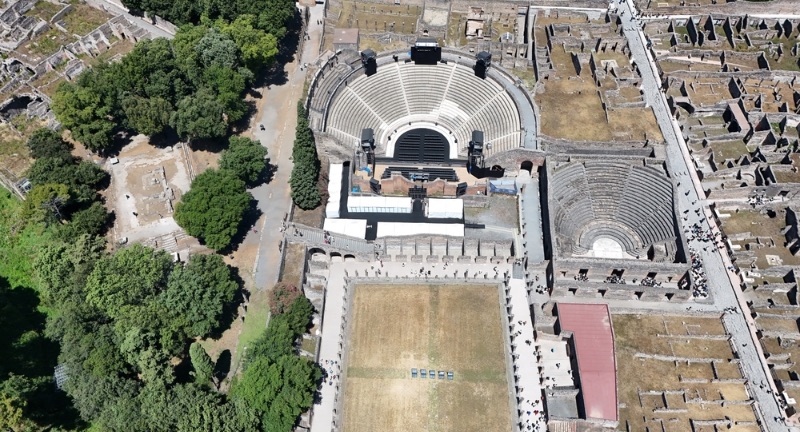
Shutterstock
Pompeii had an advanced water system for its time. The city was equipped with aqueducts that brought fresh water from nearby sources. Water was distributed throughout the city via public fountains, baths, and even private homes. This system played a vital role in Pompeii’s public health and daily life.
The Amphitheater
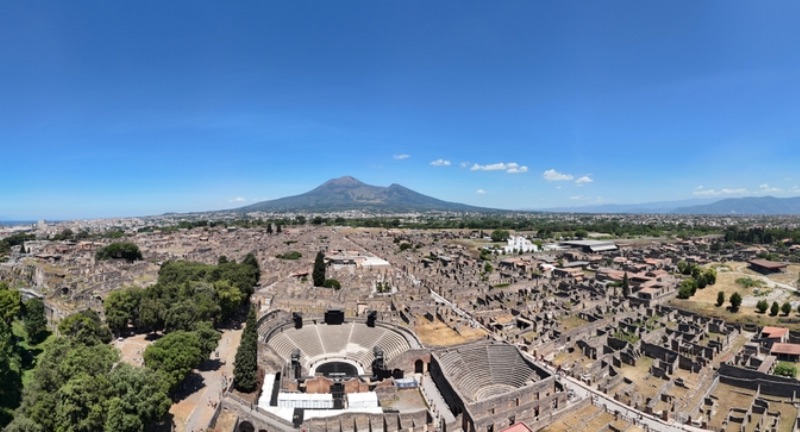
Shutterstock
Pompeii’s amphitheater is one of the oldest surviving Roman amphitheaters in the world. It was used for gladiatorial games and other public spectacles. Seating around 20,000 spectators, the amphitheater was a central feature of Pompeii’s entertainment scene. Today, it stands as a testament to the city’s rich cultural life.
Stepping Stones of Pompeii
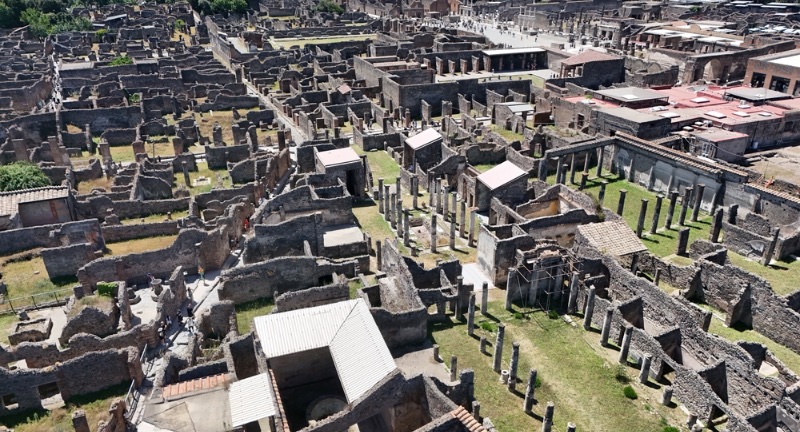
Shutterstock
The streets of Pompeii were lined with stepping stones. These stones allowed pedestrians to cross streets without getting their feet dirty, as the streets doubled as drainage channels. The stones were spaced so that carts and chariots could pass between them. This feature is one of the many ingenious elements of Pompeii’s urban planning.
Pompeii’s Brothels
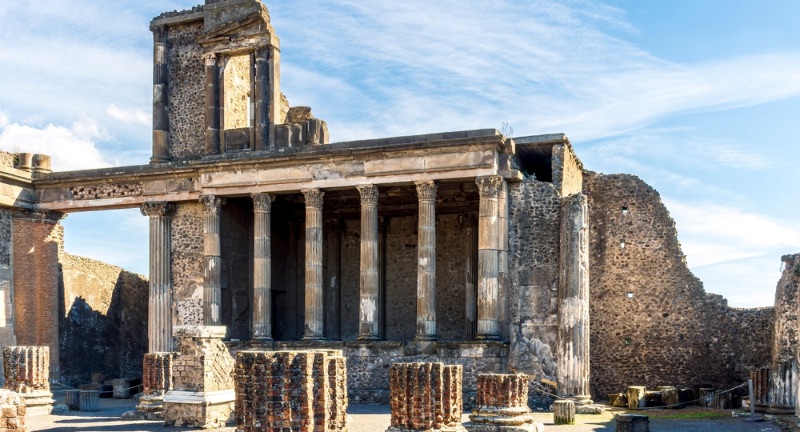
Shutterstock
Pompeii was home to numerous brothels, known as “lupanars.” These establishments were frequented by both citizens and travelers. The walls of the lupanars were adorned with frescoes depicting erotic scenes. Today, these frescoes offer insight into the social and sexual practices of ancient Pompeii.
The Frescoes of Pompeii
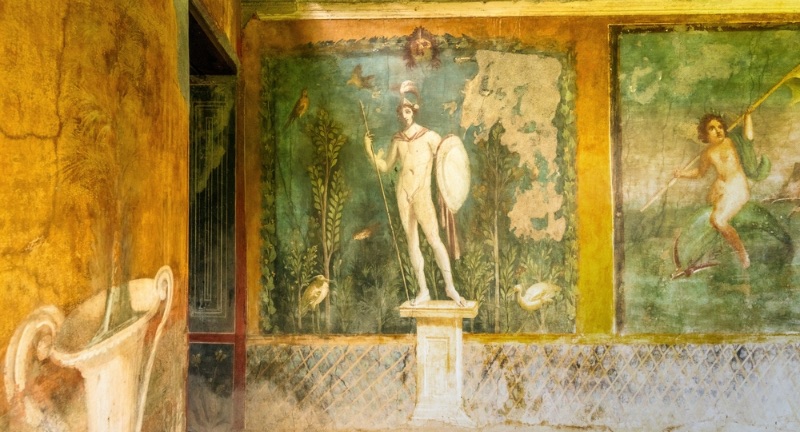
Shutterstock
Pompeii is famous for its vibrant frescoes, which decorated the walls of homes, shops, and public buildings. These paintings depict scenes from mythology, daily life, and nature. The frescoes were created using a technique where pigments were applied to wet plaster. Many have survived in remarkably good condition, providing a colorful view of Pompeii’s art and culture.
A Thriving Economy
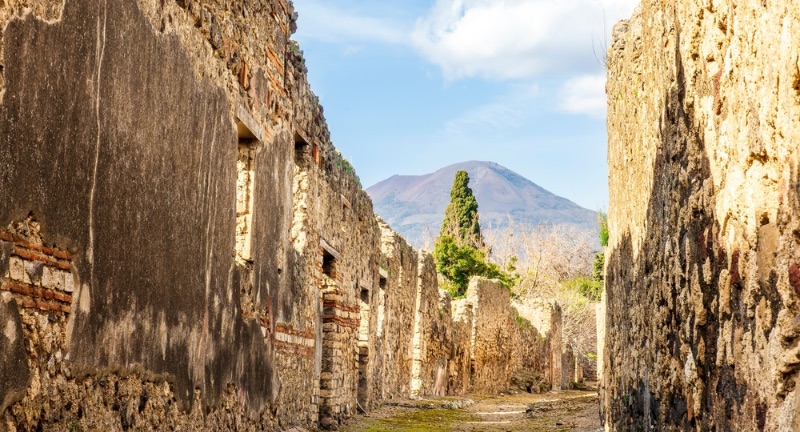
Shutterstock
Pompeii’s economy was bustling, thanks to its prime location near the coast and fertile lands. The city was a major center for trade and commerce, with goods flowing in from across the Roman Empire. Pompeii’s economy was also based on agriculture, particularly wine and olive oil production. The remains of shops, taverns, and markets provide insight into the city’s commercial activity.
Shops and Bakeries
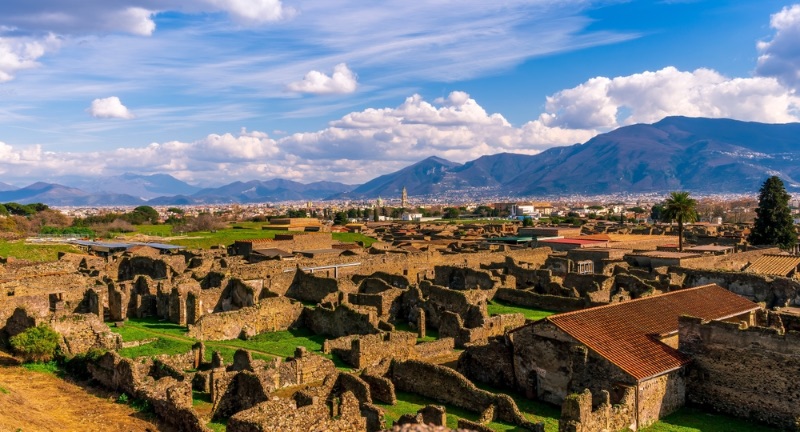
Shutterstock
Pompeii had many shops and bakeries that catered to its population’s daily needs. The remains of ovens, mills, and counters have been uncovered, giving us a look into the food industry of ancient Pompeii. Some bakeries even had carbonized loaves of bread preserved by the volcanic ash. These remains provide a fascinating glimpse into the daily life and diet of Pompeii’s inhabitants.
Public Baths
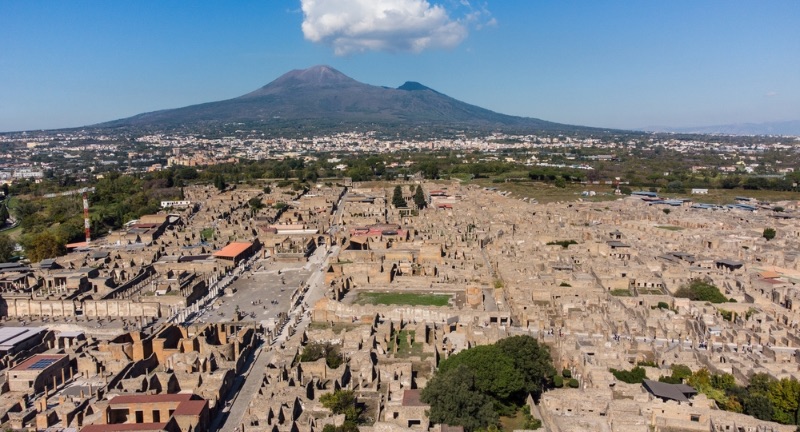
Shutterstock
Public baths were a central feature of Pompeian life, used for socializing, hygiene, and relaxation. The city had several bath complexes, including the Stabian, Forum, and Suburban Baths. These baths were equipped with heated rooms, cold baths, and intricate heating systems known as hypocausts. The public baths were a reflection of Roman society’s emphasis on cleanliness and public life.
The Villa of the Mysteries
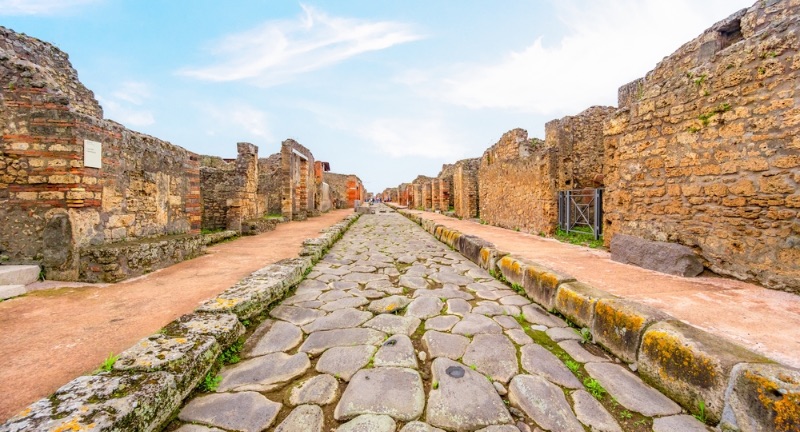
Shutterstock
The Villa of the Mysteries is one of Pompeii’s most famous and well-preserved houses. Located on the outskirts of the city, it is best known for its frescoes depicting a mysterious initiation rite, likely related to the cult of Dionysus. The villa provides a glimpse into the wealth and lifestyle of Pompeii’s elite. Its beautifully decorated rooms remain a highlight of Pompeii’s archaeological treasures.
Pompeii’s Religion
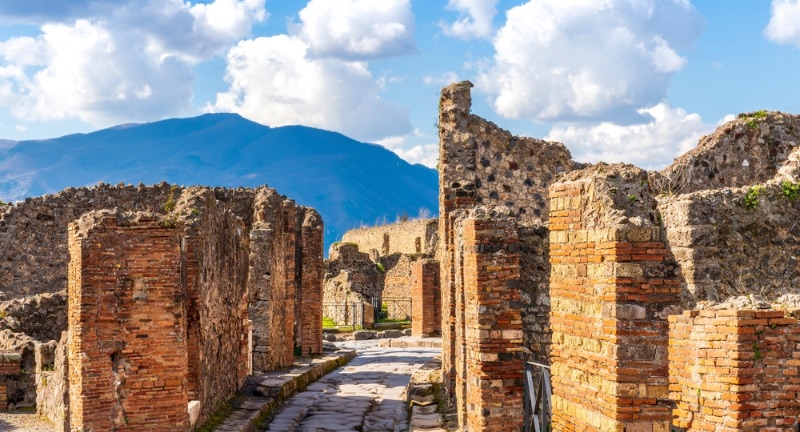
Shutterstock
Pompeiians worshiped a variety of gods, reflecting the polytheistic beliefs of Roman society. Temples dedicated to gods such as Jupiter, Apollo, and Venus were found throughout the city. Religious rituals and festivals were a regular part of life in Pompeii, often held in public spaces. The presence of household shrines, known as “lararia,” in private homes also reflects the importance of religion in daily life.
Human and Animal Remains
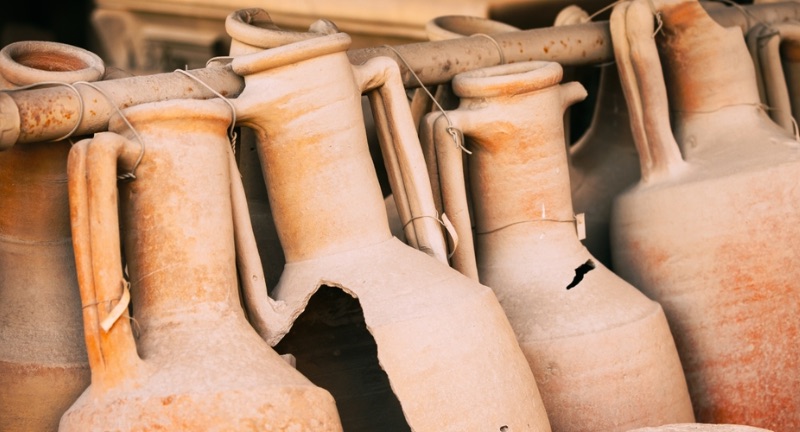
Shutterstock
Many human and animal remains were discovered in Pompeii, offering a somber reminder of the eruption’s devastation. Archaeologists have uncovered the remains of humans, often preserved in the positions they died. Dogs, horses, and other animals were also found, frozen in time by the ash and pumice. These remains give us a haunting glimpse of the disaster’s impact on all forms of life in the city.
Casts of Pompeii’s Victims
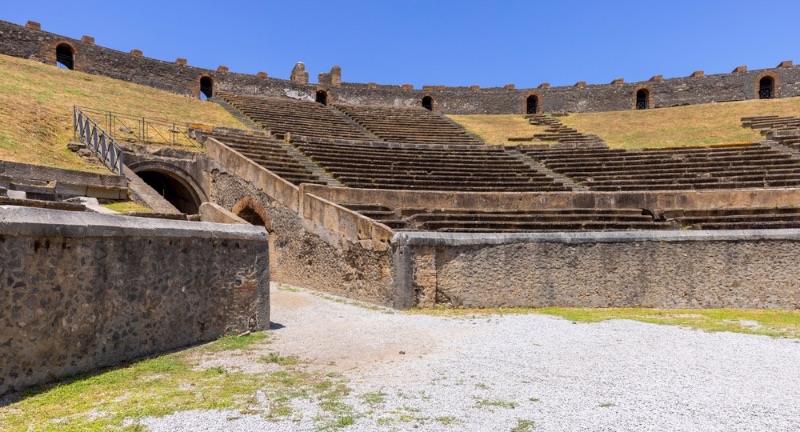
Shutterstock
The bodies of many Pompeiians were preserved as casts in volcanic ash. When archaeologists found hollow spaces where bodies had decomposed, they filled these spaces with plaster, creating detailed molds of the victims. These casts show the exact positions in which people died, capturing their final moments. They remain one of the most poignant and iconic discoveries of Pompeii’s excavation.
The Reign of Emperor Titus
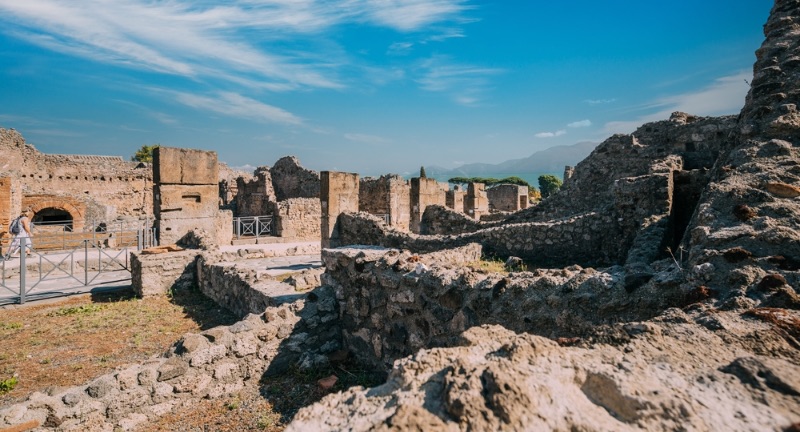
Shutterstock
The eruption of Mount Vesuvius occurred during the reign of Emperor Titus, who ruled from 79 to 81 AD. Titus was a popular and effective ruler, and his reign was marked by several significant events, including the completion of the Colosseum. The destruction of Pompeii was one of the major disasters during his short reign. In response to the tragedy, Titus provided aid to the survivors and those affected by the eruption.
Other Towns Destroyed
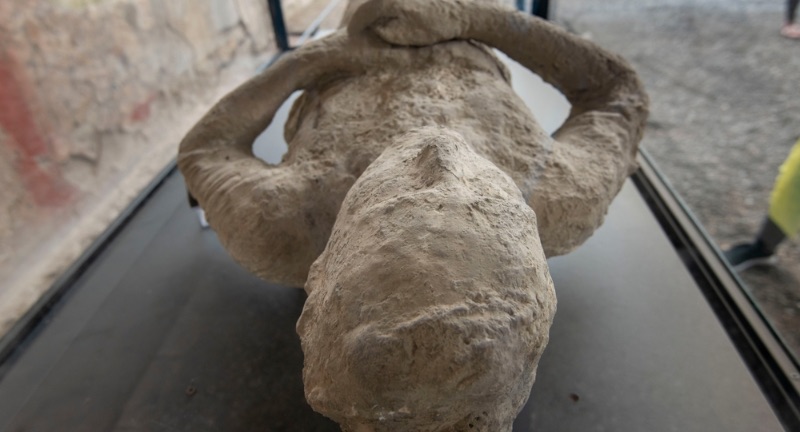
Shutterstock
In addition to Pompeii, other nearby towns were also destroyed by the eruption of Mount Vesuvius. Herculaneum, Stabiae, and Oplontis were all buried under ash and pyroclastic flows. While Pompeii is the most famous, these towns also offer valuable archaeological insights into Roman life. Excavations in these areas continue to reveal new findings about the disaster and its widespread impact.
Insights into Roman Life
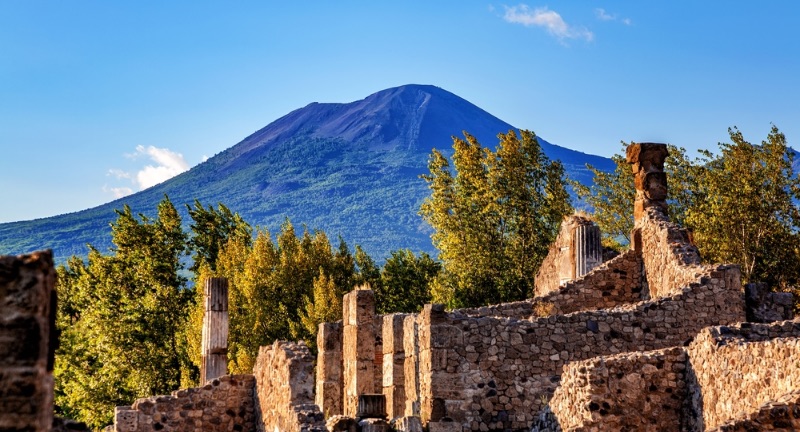
Shutterstock
The preservation of Pompeii offers an unparalleled window into ancient Roman life. From public buildings and private homes to shops and streets, the city reveals details of Roman architecture, society, and culture. Artifacts found in Pompeii provide insights into daily life, from cooking utensils to clothing. These discoveries make Pompeii one of the most significant archaeological sites for understanding ancient Rome.
The City’s Layout
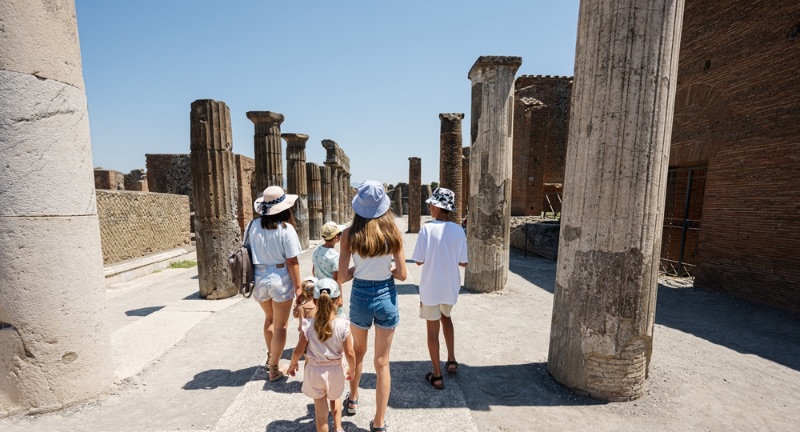
Shutterstock
Pompeii’s layout reflects both public and private life in a typical Roman city. The city was organized with a grid-like pattern of streets and included a variety of public spaces such as forums, temples, and baths. Private homes ranged from modest dwellings to grand villas with intricate gardens. The ruins of Pompeii showcase how urban planning and architecture catered to both community and individual needs.
Ongoing Excavations
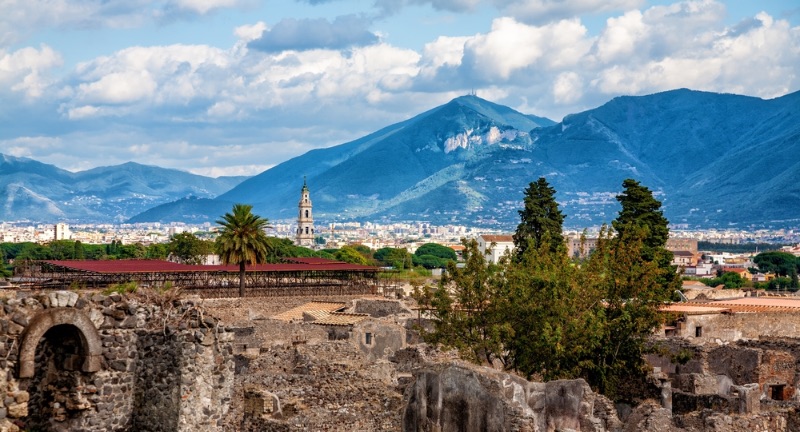
Shutterstock
Excavations in Pompeii continue to this day, revealing new discoveries about the city and its destruction. Archaeologists are still uncovering houses, artifacts, and frescoes hidden beneath the ash. These ongoing efforts help refine our understanding of ancient Roman culture and daily life. Each new find adds to the rich tapestry of knowledge that Pompeii provides.
Conclusion
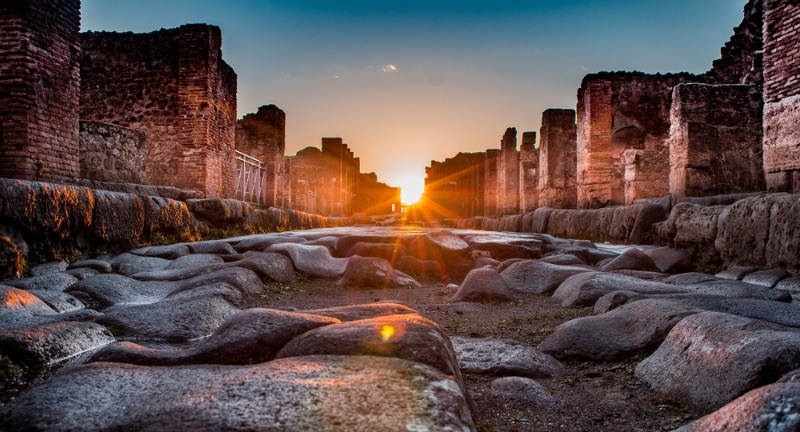
Shutterstock
The story of Pompeii is a reminder of the inevitable power of nature. As we ponder the destruction of Pompeii, we must appreciate this city as a unique opportunity to learn more about the lives of the people who lived in Ancient Rome. The continuous archeological digs help us to learn the secrets of Pompeii. If you ever have the opportunity to visit this city, really try to take it all in and remember you are standing in the middle of history.

 News2 months ago
News2 months ago
 Lifestyle3 months ago
Lifestyle3 months ago
 Entertainment3 days ago
Entertainment3 days ago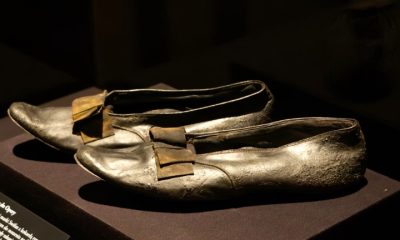
 Lifestyle2 months ago
Lifestyle2 months ago
 Entertainment3 days ago
Entertainment3 days ago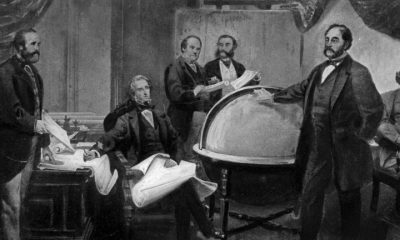
 Lifestyle2 months ago
Lifestyle2 months ago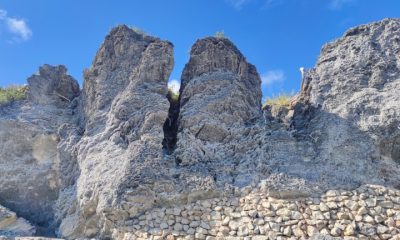
 News2 months ago
News2 months ago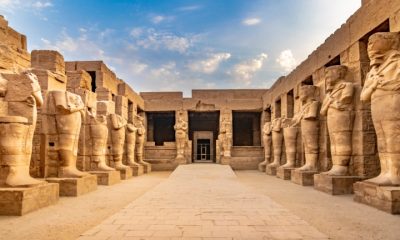
 Lifestyle2 months ago
Lifestyle2 months ago











































